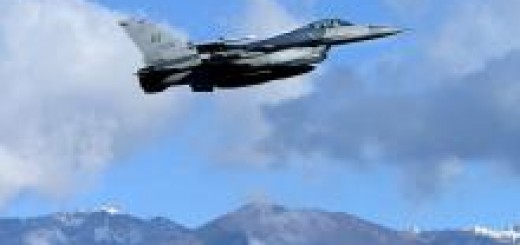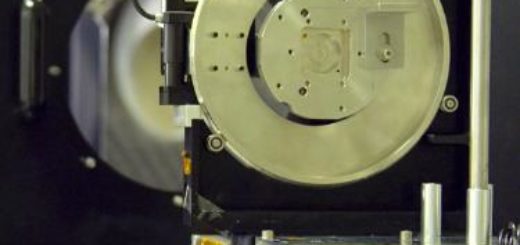Breaking News: U.S. firm Anduril enters autonomous air combat with presentation of Fury drone

{loadposition bannertop}
{loadposition sidebarpub}
On June 16, 2025, Anduril Industries, the California-based defense tech firm, unveiled its Fury drone at the Paris Air Show, positioning it at the heart of the future of autonomous multi-role air combat. This long-endurance unmanned aerial vehicle (UAV) merges advanced AI-driven software with combat-ready hardware, embodying a shift toward fully autonomous warfare. Presented as a cost-efficient, scalable alternative to manned systems, Fury signals a decisive moment in the evolution of operational autonomy for the U.S. and its allies. Its presence at Le Bourget affirms a deepening commitment to AI-integrated air dominance. Follow Army Recognition on Google News at this link
Anduril’s Fury drone is not merely a new product, it is a strategic enabler for the next chapter in autonomous aerial warfare (Picture source: Army recognition Group)
Fury is a high-endurance, high-performance Autonomous Air Vehicle developed by Anduril Industries, tailored for the most demanding aerial missions including ISR (Intelligence, Surveillance, Reconnaissance), electronic warfare, and precision strike. According to Anduril’s official product sheet, Fury can fly for over 15 hours and is built around an open architecture that enables modular payload integration. Its significant internal fuel capacity and robust aerodynamic design enable it to sustain long-range operations without reliance on external support assets. At its core lies Lattice OS, Anduril’s AI-enabled autonomy software, delivering real-time decision-making, mission flexibility, and seamless integration into multi-domain operations.
Initially developed as part of Anduril’s vision to accelerate the deployment of autonomous combat systems, Fury has gone through an iterative, digitally driven development cycle. The airframe and subsystems have been continuously tested through real-world experimentation, refining operational relevance in swarming scenarios, manned-unmanned teaming, and collaborative strike networks. Built on commercially available subsystems and employing a digital workflow, Fury was designed from inception for affordability, mass production, and rapid upgrades, departing from legacy drone programs hampered by high cost and long timelines.
Compared to existing systems such as General Atomics’ MQ-9 Reaper or the Turkish Akinci, Fury offers superior adaptability and a reduced logistics footprint. Unlike legacy drones that require human-piloted mission management, Fury operates on the edge, independently executing complex tasks in denied environments. Its compliance with the Modular Open Systems Approach (MOSA) makes it more upgradeable and interoperable than earlier systems, and its design prioritizes forward maintenance with no need for depot-level support, a major advantage for expeditionary forces.
Strategically, Fury redefines airpower by enabling persistent autonomy at scale. Its low-cost, high-performance profile supports distributed operations, where dozens can be fielded simultaneously for saturation strikes, autonomous surveillance grids, or electronic suppression missions. This has profound implications in great power competition scenarios, particularly in the Indo-Pacific, where operational reach, mass, and adaptability are critical. For NATO and other U.S. partners, the introduction of Fury could also offset the high costs and risks of deploying manned aircraft in contested areas.
Anduril’s Fury is likely to be a candidate for multiple acquisition pathways. Its compatibility with U.S. Air Force and Navy future autonomous programs, including the Collaborative Combat Aircraft (CCA) initiative, makes it a natural fit. Discussions with Five Eyes partners are reportedly underway, and Paris Air Show presentations suggest interest from European defense buyers looking to reinforce their unmanned strike capabilities. Its scalable production line and COTS integration open the door for foreign military sales (FMS) and government-to-government contracts, particularly among nations seeking lower-cost alternatives to stealth fighters or high-end drones.
Anduril’s Fury drone is not merely a new product, it is a strategic enabler for the next chapter in autonomous aerial warfare. Its unveiling at Paris Air Show 2025 sends a clear signal: autonomy, affordability, and battlefield mass are now achievable without compromising on performance. By merging software-defined mission systems with modular, mission-proven airframes, Fury offers a disruptive capability that aligns with both emerging threats and evolving doctrine. As procurement strategies shift toward scalable, AI-integrated systems, Fury stands out as a pivotal solution in the race to operationalize autonomy across the battlespace.

{loadposition bannertop}
{loadposition sidebarpub}
On June 16, 2025, Anduril Industries, the California-based defense tech firm, unveiled its Fury drone at the Paris Air Show, positioning it at the heart of the future of autonomous multi-role air combat. This long-endurance unmanned aerial vehicle (UAV) merges advanced AI-driven software with combat-ready hardware, embodying a shift toward fully autonomous warfare. Presented as a cost-efficient, scalable alternative to manned systems, Fury signals a decisive moment in the evolution of operational autonomy for the U.S. and its allies. Its presence at Le Bourget affirms a deepening commitment to AI-integrated air dominance.
Follow Army Recognition on Google News at this link
Anduril’s Fury drone is not merely a new product, it is a strategic enabler for the next chapter in autonomous aerial warfare (Picture source: Army recognition Group)
Fury is a high-endurance, high-performance Autonomous Air Vehicle developed by Anduril Industries, tailored for the most demanding aerial missions including ISR (Intelligence, Surveillance, Reconnaissance), electronic warfare, and precision strike. According to Anduril’s official product sheet, Fury can fly for over 15 hours and is built around an open architecture that enables modular payload integration. Its significant internal fuel capacity and robust aerodynamic design enable it to sustain long-range operations without reliance on external support assets. At its core lies Lattice OS, Anduril’s AI-enabled autonomy software, delivering real-time decision-making, mission flexibility, and seamless integration into multi-domain operations.
Initially developed as part of Anduril’s vision to accelerate the deployment of autonomous combat systems, Fury has gone through an iterative, digitally driven development cycle. The airframe and subsystems have been continuously tested through real-world experimentation, refining operational relevance in swarming scenarios, manned-unmanned teaming, and collaborative strike networks. Built on commercially available subsystems and employing a digital workflow, Fury was designed from inception for affordability, mass production, and rapid upgrades, departing from legacy drone programs hampered by high cost and long timelines.
Compared to existing systems such as General Atomics’ MQ-9 Reaper or the Turkish Akinci, Fury offers superior adaptability and a reduced logistics footprint. Unlike legacy drones that require human-piloted mission management, Fury operates on the edge, independently executing complex tasks in denied environments. Its compliance with the Modular Open Systems Approach (MOSA) makes it more upgradeable and interoperable than earlier systems, and its design prioritizes forward maintenance with no need for depot-level support, a major advantage for expeditionary forces.
Strategically, Fury redefines airpower by enabling persistent autonomy at scale. Its low-cost, high-performance profile supports distributed operations, where dozens can be fielded simultaneously for saturation strikes, autonomous surveillance grids, or electronic suppression missions. This has profound implications in great power competition scenarios, particularly in the Indo-Pacific, where operational reach, mass, and adaptability are critical. For NATO and other U.S. partners, the introduction of Fury could also offset the high costs and risks of deploying manned aircraft in contested areas.
Anduril’s Fury is likely to be a candidate for multiple acquisition pathways. Its compatibility with U.S. Air Force and Navy future autonomous programs, including the Collaborative Combat Aircraft (CCA) initiative, makes it a natural fit. Discussions with Five Eyes partners are reportedly underway, and Paris Air Show presentations suggest interest from European defense buyers looking to reinforce their unmanned strike capabilities. Its scalable production line and COTS integration open the door for foreign military sales (FMS) and government-to-government contracts, particularly among nations seeking lower-cost alternatives to stealth fighters or high-end drones.
Anduril’s Fury drone is not merely a new product, it is a strategic enabler for the next chapter in autonomous aerial warfare. Its unveiling at Paris Air Show 2025 sends a clear signal: autonomy, affordability, and battlefield mass are now achievable without compromising on performance. By merging software-defined mission systems with modular, mission-proven airframes, Fury offers a disruptive capability that aligns with both emerging threats and evolving doctrine. As procurement strategies shift toward scalable, AI-integrated systems, Fury stands out as a pivotal solution in the race to operationalize autonomy across the battlespace.






